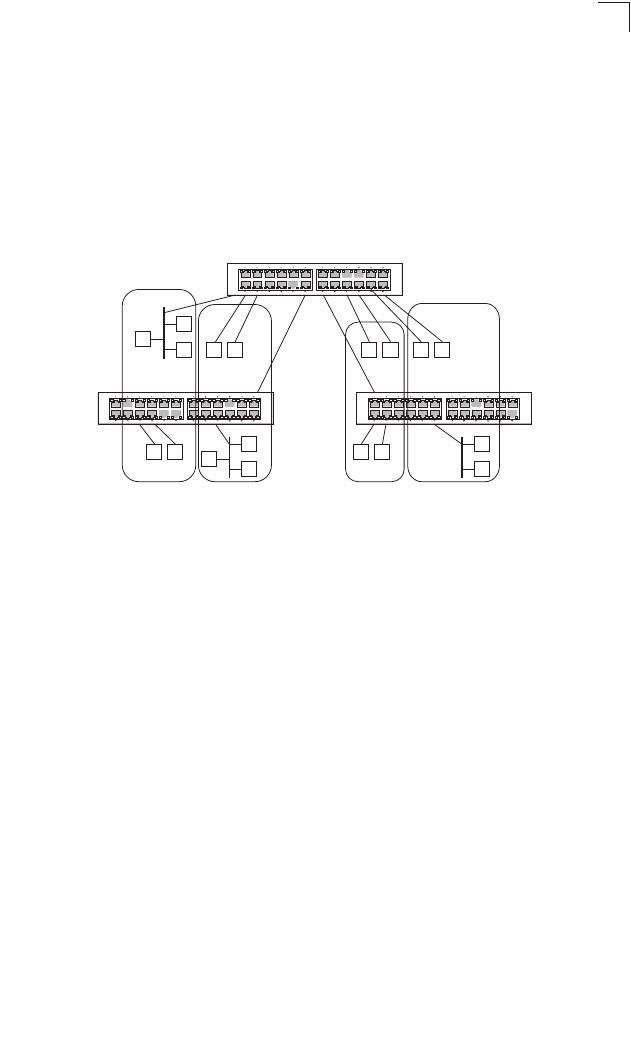
Assigning Ports to VLANs
23-3
23
these hosts, and core switches in the network, enable GVRP on the links between
these devices. You should also determine security boundaries in the network and
disable GVRP on the boundary ports to prevent advertisements from being
propagated, or forbid those ports from joining restricted VLANs.
Note: If you have host devices that do not support GVRP, you should configure static or
untagged VLANs for the switch ports connected to these devices (as described in
“Adding Static Members to VLANs (VLAN Index)” on page 23-7). But you can still
enable GVRP on these edge switches, as well as on the core switches in the
network.
Forwarding Tagged/Untagged Frames
If you want to create a small port-based VLAN for devices attached directly to a
single switch, you can assign ports to the same untagged VLAN. However, to
participate in a VLAN group that crosses several switches, you should create a
VLAN for that group and enable tagging on all ports.
Ports can be assigned to multiple tagged or untagged VLANs. Each port on the
switch is therefore capable of passing tagged or untagged frames. When forwarding
a frame from this switch along a path that contains any VLAN-aware devices, the
switch should include VLAN tags. When forwarding a frame from this switch along a
path that does not contain any VLAN-aware devices (including the destination host),
the switch must first strip off the VLAN tag before forwarding the frame. When the
switch receives a tagged frame, it will pass this frame onto the VLAN(s) indicated by
the frame tag. However, when this switch receives an untagged frame from a
VLAN-unaware device, it first decides where to forward the frame, and then inserts a
VLAN tag reflecting the ingress port’s default VID.
Port-based VLAN
1
2
9 3 4
10 11
12
13
14
5 6 7 8
15 16
18
19


















